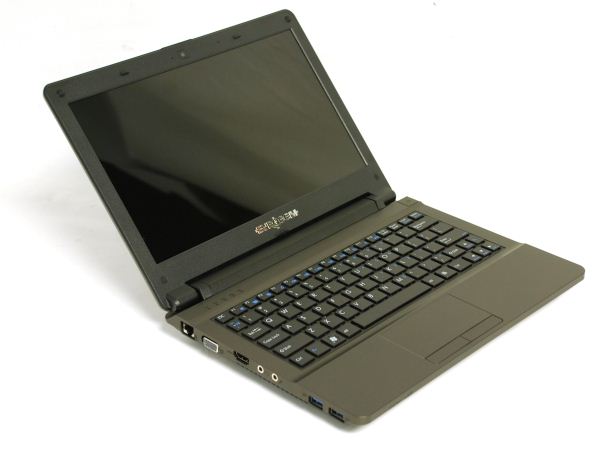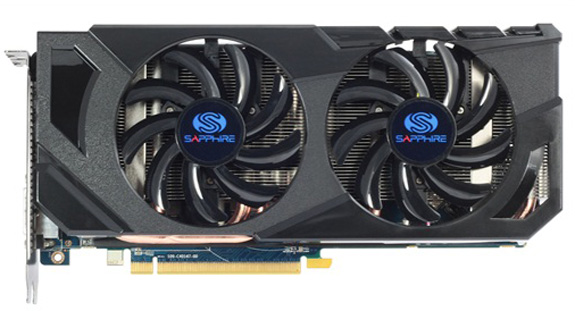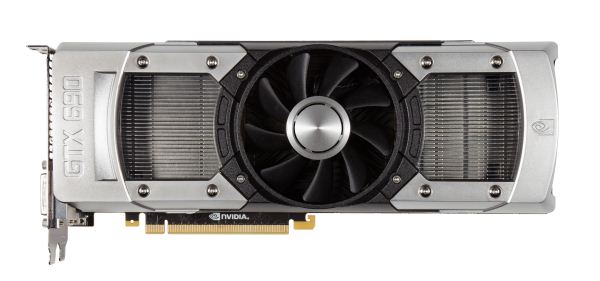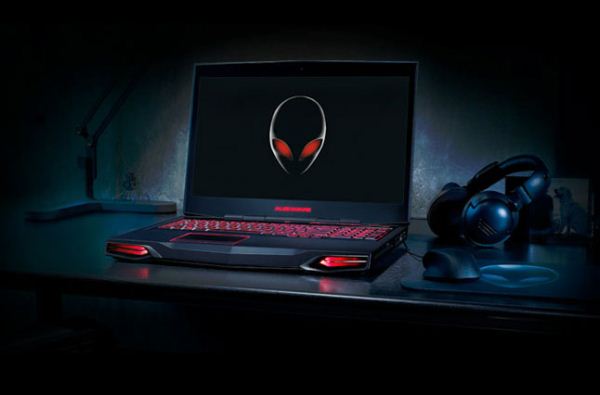Results 1,821 to 1,830 of 12091
Thread: Anandtech News
-
04-26-12, 07:30 PM #1821
Anandtech: Clearwire Announces Initial TDD-LTE Network Launch Early 2013
Clearwire has been talking about deploying TDD-LTE (Time Division Duplexing, as opposed to FDD) on its 2.5 GHz spectrum for some time now, and has announced some more launch details today, including initial markets and a rough timeline. Clearwire is focusing on upgrading "hot zones" in urban markets first, which probably means its most actively used cell sites.
In its earnings report, Clearwire notes that it has already completed the first phase of its network overlay on 8,000 such "hot zone" cell sites, primarily ones where it can offload for future compatible Sprint and Cricket devices. Some 5,000 of such cell sites are in major markets which it is targeting for early 2013 launch, including New York City, San Francisco, Los Angeles, Chicago and Seattle. Clearwire is planning to launch its TDD-LTE network in 31 total markets by mid 2013, though it notes that it will name the specific other markets at a later date.
As an addendum, Clearwire has been trialing and demonstrating 20 MHz FDD-LTE in Phoenix, AZ for a while now on its 2.5 GHz spectrum (LTE band 41). I would fully expect to see Clearwire take full advantage of band 41's size and run 20 MHz TDD-LTE here, and implement carrier aggregation with LTE-A in the future.
Source: Clearwire (1), (2)
More...
-
04-27-12, 01:30 AM #1822
Anandtech: iBUYPOWER Erebus GT Review: Ivy Bridge and NVIDIA's GeForce GTX 680 in SLI
It was only a month-and-a-half ago that we were able to test the iBUYPOWER Erebus GT, a boutique desktop with a custom water-cooling loop at a very compelling price for what you got. Yet in the intervening period the computing landscape has actually changed fairly drastically, with NVIDIA's GeForce GTX 680 coming to market and Intel releasing the Ivy Bridge-based Core i7-3000 series processors. Our previous review unit focused more on value proposition with a single AMD Radeon HD 7970 handling graphics duties, but the one we have on hand today is a true war machine.
We've covered Ivy Bridge extensively up to its launch and exhaustively this week, with a breakdown of the architecture and performance, analysis of its overclocking potential, testing in an HTPC environment, benching the notebook version, and even a vendor discussion and Q&A with ASUS of the Z77 platform that accompanies it. Today we have a firsthand look at how Ivy Bridge is going to handle and overclock in the field courtesy of an updated Erebus GT from iBUYPOWER, along with our first taste of a pair of NVIDIA GeForce GTX 680 graphics cards in SLI runing on the platform.
More...
-
04-27-12, 08:00 AM #1823
Anandtech: Codegen P-Case 460W - Low Price, Poor Quality
Today we will review a Codegen PSU. This product is not available in the US as they sell it in some European countries only, but it's still a nice representative of the low-end product range. In fact the P-Case 460W is a part of the Q3335-A2 bundle. They sell it with a good looking case for office use. With less than 30 EUR (about 40 USD; 04-27-2012) it appears to be a good offer, but we will see if they meet one's expectations.
Q3335-A2 bundle
Codegen is a well known brand for inexpensive power supplies. The P-Case 460W has passive PFC (no universal AC input) and no finish since most customers simply don't care how a PSU like this looks like. In addition there is no sleeving for the cables. The delivery contents of the bundle include a power cord and all necessary screws. You'll note that there's no 80 Plus certification on this one, which isn't too surprising considering the target market. Read on to find out if this PSU is still recommendable.
More...
-
04-27-12, 06:00 PM #1824
Anandtech: Eurocom Monster 1.0: Gaming with Quad-Core IVB and Kepler at 11.6”
Eurocom is a company that we’ve seen a few times over the years. Mostly, their focus is on the high-end mobile workstation market, though they also sell plenty of consumer-oriented laptops and notebooks. What we haven’t seen from them before is a high performance gaming-worthy system stuffed into a small chassis; they’ve had some business-class ultraportables and tablets, and they’ve had 15” and larger gaming notebooks, but there’s nothing in their past ten years even remotely similar to the Monster 1.0. In fact, the only other laptop we’ve ever seen that targeted this category is Alienware’s M11x, a small gaming laptop sporting ULV CPUs with moderate GPUs.
The Monster 1.0 isn’t just about stuffing the latest and greatest parts into a small form factor. Intel’s new Ivy Bridge processor is socket compatible with Sandy Bridge chips, and since there are no dual-core IVB offerings right now Eurocom offers the Monster with either dual-core SNB or quad-core IVB—though you’ll have to wait a bit longer for the quad-core IVB option it seems. Since it uses the updated HM76 chipset, you also get native USB 3.0 ports. Let’s run through the supported components and options just to give you a taste of what Eurocom has to offer.
Okay, seriously, that is a metric ton of performance stuffed into a relatively small chassis. We’re obviously not looking at something in the ultrabook category, and the 0.51” thickness at the front is misleading as it looks more like a 1.1” height (the front narrows to a small wedge over the last inch or so of the palm rest), but for aEurocom Monster 1.0 Configuration Options Processor Core i7-3720QM (4x2.6-3.6GHz, 6MB L3, 22nm, 45W)
Core i7-3610QM (4x2.3-3.3GHz, 6MB L3, 22nm, 45W)
Core i7-2620M (2x2.7-3.4GHz, 4MB L3, 32nm, 35W)
Core i5-2540M (2x2.6-3.3GHz, 3MB L3, 32nm, 35W)
Core i5-2520M (2x2.5-3.2GHz, 3MB L3, 32nm, 35W)
Core i5-2410M (2x2.3-2.9GHz, 3MB L3, 32nm, 35W)Chipset Intel HM76 Memory Up to 8GB (2x4GB) DDR3-1600
(Two SO-DIMM slots, DDR3-1333 or DDR3-1600)Graphics Intel HD 4000 (16 EUs, DX11) on Ivy Bridge
Intel HD 3000 (12 EUs, DX10) on Sandy Bridge
NVIDIA GeForce GT 650M 2GB DDR3 Optimus
(384 CUDA cores, 850/1800MHz Core/Shader/RAM)Display 11.6" Glossy 16:9 768p (1366x768) or
11.6" Matted 16:9 768p (1366x768) (AUO B116XW02)Storage 120GB-600GB SSD (Intel or Micron)
500GB-750GB 7200RPM HDD
1TB 5400RPM HDDOptical Drive N/A Networking Gigabit Ethernet
802.11n WiFi (Intel or Bigfoot Killer)
Bluetooth (Optional, depending on WLAN)Audio Stereo speakers
Headphone and microphone jacksBattery 6-cell, 62Wh Front Side Memory Card Reader Left Side 2 x USB 3.0
Headphone jack
Microphone jack
HDMI 1.4a
Exhaust vent
VGA
Gigabit EthernetRight Side Kensington Lock
1 x USB 2.0
AC Power ConnectionBack Side N/A Operating System Windows 7 Home Premium 64-bit
Windows 7 Professional 64-bit
Windows 7 Ultimate 64-bitDimensions 11.48" x 8.28" x 0.51-1.48" (WxDxH)
(287mm x 207mm x 12.7-37.1mm)Weight 3.96 lbs (1.8kg) Extras 1.3MP Webcam
83-Key Keyboard
Flash Reader (MMC/SD/MS Pro)
90W Power AdapterPricing Starting at $817 with i5-2410M
(500GB HDD, 4GB RAM, and 1-year warranty)
$2203 for High-End i7-2620M
(240GB SSD, 8GB RAM, and 3-year warranty)
-
04-28-12, 04:00 PM #1825
Anandtech: Capsule Review: Sapphire's Radeon HD 7870 Overclock Edition
As AMD’s 28nm allocation has improved so has the selection of cards available on the market. We’re still in the first phase of the Radeon HD 7000 series rollout, with AMD’s partners building semi-custom cards based on AMD’s reference PCB, but even without custom PCBs AMD’s partners have been able to turn out a number of interesting designs. This is particularly the case for the 7800 series, where prices are high enough for partners to experiment with different coolers and TDPs are low enough to allow more than a handful of approaches.
Last month we saw some of those first designs with PowerColor’s PCS+ HD7870 and HIS’s IceQ 7870 Turbo, and today we’ll be looking at a third: Sapphire’s HD 7870 Overclock Edition, their semi-custom factory overclocked 7870. How does Sapphire’s dual-fan entry stand up to the competition? Let’s find out.
More...
-
04-28-12, 11:00 PM #1826
Anandtech: NVIDIA Unveils GeForce GTX 690: Dual GK104 Flagship Launching May 3rd
As we mentioned back on Monday, NVIDIA was going to be making some kind of GeForce announcement this evening at the NVIDA Gaming Festival 2012 in Shanghai, China. NVIDIA’s CEO Jen-Hsun Huang has just finished his speech, announcing NVIDIA’s next ultra-premium video card, the GeForce GTX 690.
Launching later this week, the GeForce GTX 690 will be NVIDIA’s new dual-GPU flagship video card, complementing their existing single-GPU GeForce GTX 680. Equipped with a pair of fully enabled GK104 GPUs, NVIDIA is shooting for GTX 680 SLI performance on a single card, and with GTX 690 they just might get there. We won’t be publishing our review until Thursday, but in the meantime let’s take a look about what we know so far about the GTX 690.
More...
-
04-30-12, 12:30 AM #1827
Anandtech: SilverStone Grandia GD07 Review: Centering and Serving Your Media
The last time we reviewed one of SilverStone's Grandia enclosures, it was the GD04, and it was a review that launched the first major revamp of how we test cases. Since then SilverStone has kept the Grandia series relatively staid, but at CES they were showing off the new GD07 and GD08, and today we have the GD07 in house.
SilverStone has turned the GD07 into an enclosure designed to cram as much computer into as small a space as possible within reason, and the horizontal orientation seems to make it ideal for use as a media center enclosure. However, inside it also has a tremendous amount of storage capacity that suggests it could also be used as a media server. The GD04 was a fine case once you tweaked it and added a fan controller; is the GD07 ideal on the first go?
More...
-
04-30-12, 01:00 PM #1828
Anandtech: The Prybar: GeForce GTX 690 Arrives
If there was any doubt after Saturday night as to what NVIDIA's prybar was for, this should put it to rest. FedEx just dropped off the prybar's companion, the venerable wooden crate.
Top: Caution, Weapons Grade Gaming Power
Side: 0b1010110010 [690]
BT-7.080
G08-H86-A000
Applying the prybar in a slightly more civilized manner than we would in most video games, we find the GeForce GTX 690 inside. (ed: If this was a 90's video game, then according to the Crate Review System NVIDIA is already doing very well)
That's all we can show you for now. We'll have more on Thursday.
More...
-
04-30-12, 04:30 PM #1829
Anandtech: MSI Z77A-GD65 Ivy Bridge Motherboard Giveaway
Thanks to everyone who entered our last giveaway. We're waiting for eligibility confirmation from our four potential winners: bigbluerobo, nhilyna, Lord 666 and fiftysixtius. Respond to the email in your inbox to verify your eligibility and claim your prize!
If you didn't win last time, don't worry - MSI came through with a Z77 motherboard of their own to give away to one lucky reader. MSI's Z77A-GD65 is pictured below and it's what we're giving away starting today:
Read on for entry details!
More...
-
04-30-12, 08:00 PM #1830
Anandtech: Alienware M14x, M17x, and M18x: Now with Ivy Bridge and New GPUs
The launch of any new mobile processor line almost always precedes retail availability, but with Ivy Bridge mobile just previewed last week, we’re already seeing various companies ship updated laptop and notebook configurations. The biggest vendor to announce shipping IVB laptops/notebooks is Dell, in this case under their Alienware brand. All three currently shipping Alienware laptops are now shipping with mobile Ivy Bridge (along with some continued support for Sandy Bridge), and the GPU configurations are also being updated across the lineup. Here’s the full rundown of the CPUs, GPUs, and other configuration options supported on the Alienware notebooks:
The smallest of the bunch is the Alienware M14x, and along with Ivy Bridge the GPU option gets upgraded from GT 555M to the new Kepler-based GT 650M. We’ve pulled the specs for the GT 650M from NVIDIA’s site, and it’s possible that Alienware will use slightly different clocks, but it should still be a sizeable upgrade to the previous M14x model that used a GT 555M with DDR3 memory. Memory bandwidth goes up nearly 50%, and compute performance likewise gets a healthy shot in the arm: the 384 CUDA cores in the GT 650M should provide 66% more compute and texturing potential. Given the maximum 1600x900 resolution, the combination of GPU and CPU should be sufficient to handle most games at high detail settings—4xAA might need to be disabled on some titles, however.Alienware M14x R2 Configuration Options Processors Intel Core i5-2450M (2x2.5-3.1GHz, 3MB L3, 32nm, 35W)
Intel Core i7-3610QM (4x2.3-3.3GHz, 6MB L3, 22nm, 45W)
Intel Core i7-3720QM (4x2.6-3.6GHz, 6MB L3, 22nm, 45W)
Intel Core i7-3820QM (4x2.7-3.7GHz, 8MB L3, 22nm, 45W)Chipset Intel HM77 Memory 6/8/12/16GB DDR3-1600 (two SO-DIMMs) Graphics Intel HD 3000 (12EUs) for Sandy Bridge
Intel HD 4000 (16 EUs) for Ivy Bridge
NVIDIA GeForce GT 650M 1GB/2GB 128-bit GDDR5 Optimus
(384 CUDA cores, 735/4000MHz GPU/RAM clocks)Display 14" 16:9 768p (1366x768)
14" 16:9 900p (1600x900)Hard Drive(s) 500-750GB 7200RPM HDD
512GB SSD (2.5” only)
256-512GB RAID 0/1 SSD (2.5” + mSATA)Optical Drive Slot-load DVDRW
Slot-load Blu-ray Combo DriveNetworking Gigabit Ethernet
802.11n WiFi (Intel 2230 or 6250)
Bluetooth 4.0
WiMax (Intel 6250 only)
WiDi 2.0 ReadyAudio 2.1 Klipsch Speakers + Subwoofer
2x Audio Out + Microphone jacks
Capable of 7.1 digital output (HDMI/SPDIF)Battery 8-cell 63Wh Operating System Windows 7 Home Premium 64-bit
Windows 7 Professional 64-bit
Windows 7 Ultimate 64-bitDimensions 13.27" x 10.16" x 1.49" (WxDxH)
(337mm x 258mm x 37.8mm)Weight Starting at 6.45 lbs (2.92kg) Additional 2x USB 3.0
1x USB 2.0 + PowerShare Technology
1x Mini-DisplayPort
1x HDMI 1.4
1x VGA
1.3MP HD Webcam
82-Key keyboard with AlienFX 4-Zone Backlighting
Flash reader (9-in-1 MMC/SD/MS)
150W Power Adapter
Laser-engraved Nameplate
Perhaps the more important change for the M14x will be the power draw of the new CPUs and GPUs. While there was plenty that we liked with the previous M14x configuration, there was one problem: the quad-core Sandy Bridge processors combined with GT 555M made for a rather noisy laptop under load. Both Ivy Bridge and Kepler have shown so far that they require less power to hit similar performance levels as Sandy Bridge and Fermi, so hopefully the revised M14x will be less of an ear-sore. PCI Express 3.0 is also present thanks to the CPU and GPU upgrades (at least with Ivy Bridge CPUs), but it’s unlikely the additional PCIe bandwidth will make a difference for a mobile GPU like the GT 650M. The GT 650M is also Optimus enabled, so battery life should remain around the 5-6 hours for light usage cases that we measured on the previous model.
The remaining specs are basically a rehash of what we’ve previously seen, with the only noteworthy update being the switch from Intel’s HM67 chipset to the HM77 chipset. Alienware already had a USB 3.0 controller with the HM67 version, but presumably HM77 allows them to ditch the extra controller chip and utilized Intel’s native USB 3.0 support. The third USB port is still limited to 2.0 speeds, but it does support charging of devices (e.g. iPods, Smartphones, etc.) while the laptop is powered off. Pricing of the updated M14x starts at $1099 with 6GB RAM, 500GB HDD, and a dual-core Sandy Bridge i5-2450M processor; the move to quad-core Ivy Bridge tacks on another $100, and we’d highly recommend upgrading to the 1600x900 display for $75 extra as well.
The Alienware M17x takes the previous model and again makes a few minor upgrades, largely sticking with the design that earned the M17x R3 our Bronze Editors’ Choice award. Our main complaint was with the configuration options at the time of our review, and the updated version looks like it’s corrected many of those concerns.Alienware M17x R4 Configuration Options Processors Intel Core i7-3610QM (4x2.3-3.3GHz, 6MB L3, 22nm, 45W)
Intel Core i7-3720QM (4x2.6-3.6GHz, 6MB L3, 22nm, 45W)
Intel Core i7-3820QM (4x2.7-3.7GHz, 8MB L3, 22nm, 45W)Chipset Intel HM77 Memory 6/8/12/16/24/32GB DDR3-1600 (four SO-DIMMs) Graphics NVIDIA GeForce GTX 660M 2GB 128-bit GDDR5
(384 CUDA cores, 835/4000MHz GPU/RAM clocks)
NVIDIA GeForce GTX 675M 2GB 256-bit GDDR5
(384 CUDA cores, 620/1240/3000MHz GPU/Shader/RAM clocks)
AMD Radeon HD 7970M 2GB 256-bit GDDR5
(1280 cores, 850/4800MHz GPU/RAM clocks)Display 17.3" 16:9 900p (1600x900)
17.3" 16:9 1080p (1920x1080)
17.3" 16:9 1080p 120Hz 3D Vision (1920x1080)Hard Drive(s) 500-750GB 7200RPM HDD
Optional 32GB SSD caching available
500GB HDD + 64GB mSATA SSD Boot Drive
256-512GB SSD
512GB RAID 0 (SSD)
1TB RAID 0 (HDD or SSD)Optical Drive Slot-load DVDRW
Slot-load Blu-ray Combo DriveNetworking Gigabit Ethernet
802.11n WiFi (Intel 2230 or 6250)
Bluetooth 4.0
WiMax (Intel 6250 only)
WiDi 2.0 ReadyAudio 2.0 Klipsch Speakers
3x Audio Out + Microphone jacks
Capable of 7.1 digital output (HDMI/SPDIF)Battery 9-cell 90Wh Operating System Windows 7 Home Premium 64-bit
Windows 7 Professional 64-bit
Windows 7 Ultimate 64-bitDimensions 16.14" x 11.97" x 1.75" (WxDxH)
(410mm x 304mm x 44.5mm)Weight Starting at 9.39 lbs (4.26kg) Additional 4x USB 3.0
1x eSATA/USB 2.0 combo + PowerShare Technology
1x Mini-DisplayPort
1x HDMI 1.4 Output
1x HDMI 1.3 Input
1x VGA
2.1MP FullHD Webcam
101-Key keyboard with AlienFX 4-Zone Backlighting
Flash reader (9-in-1 MMC/SD/MS)
240W Power Adapter
Laser-engraved Nameplate
For the CPU, only the best will do: the M17x is now all quad-core 45W Ivy Bridge—and no, we’re not particularly concerned with the missing i7-3920XM, as Intel’s Extreme Edition processors have generally been far too expensive for the minor performance improvements offered, especially on the mobile side of the fence where the fully unlocked multiplier isn’t as important.
For the GPU, Alienware now offers the GTX 660M (an 835MHz GK107), the GTX 675M (a rebadged GTX 580M), or AMD’s new tour de force, the HD 7970M. Interestingly, the HD 7970M is actually priced cheaper than the GTX 675M, which based on initial performance reports is bassackwards—not that we haven’t seen similar pricing oddities in the past, as NVIDIA’s top-tier GPUs almost always cost more than AMD’s. Something else that isn’t indicated on the press release is support for switchable graphics technologies; we inquired with Alienware and are waiting to hear back (on the M17x as well as the M18x).
Nearly everything else remains the same or similar to the M17x R3, but Dell’s website now includes several additional options for storage configurations, including HDDs with mSATA SSD caching (presumably via Intel’s Smart Response Technology), single SSDs, or HDD + SSD configurations. Pricing starts at $1499 for the base model with an i7-3610QM, GTX 660M, 6GB RAM, 500GB HDD, and 1600x900 LCD. The 1080p LCD upgrade is somewhat steep at $150, but we’d still recommend paying for it, and if you’re mostly interested in gaming performance the HD 7970M looks to be the fastest current mobile GPU available for $200 extra. That puts the total at $1850 for a potent gaming notebook, though if you want to add an SSD or more RAM you can easily spend more.
Rounding out their Ivy Bridge lineup, we have the Big Kahuna of gaming notebooks, Alienware’s M18x. This is one of the largest notebooks around, and it’s also one of the few places you can get dual-GPU configurations for maximum gaming performance. Right now, the M18x R2 configuration pages only list NVIDIA GPUs, but the Radeon HD 7970M should be available sometime in the coming weeks. The only other notebook we know of that supports dual HD 7970 or GTX 675M GPUs is the Clevo P270WM, which is an update to the X7200 chassis that swaps out socket LGA1366 support for LGA2011 and up to hex-core Sandy Bridge-E CPUs. These are true desktop replacements, with a starting weight of nearly 12 pounds for the single-GPU, single-HDD model. (They’re also a great way to give your mobile geek some strength training!)Alienware M18x R2 Configuration Options Processors Intel Core i7-3610QM (4x2.3-3.3GHz, 6MB L3, 22nm, 45W)
Intel Core i7-3720QM (4x2.6-3.6GHz, 6MB L3, 22nm, 45W)
Intel Core i7-3820QM (4x2.7-3.7GHz, 8MB L3, 22nm, 45W)
Intel Core i7-3920XM (4x2.9-3.8GHz, 8MB L3, 22nm, 55W)
Intel Core i7-3920XM (4x2.9-4.1GHz OC, 8MB L3, 22nm, 55W)Chipset Intel HM77 Memory 6/8/12/16/24/32GB DDR3-1600 (four SO-DIMMs)
8GB XMP DDR3-1866 (four SO-DIMMs)Graphics Single NVIDIA GeForce GTX 660M 2GB 128-bit GDDR5
(384 CUDA cores, 835/4000MHz GPU/RAM clocks)
Single or Dual NVIDIA GeForce GTX 675M 2GB 256-bit GDDR5
(384 CUDA cores, 620/1240/3000MHz GPU/Shader/RAM clocks)
Dual AMD Radeon HD 7970M 2GB 256-bit GDDR5 (Coming soon)
(1280 cores, 850/4800MHz GPU/RAM clocks)Display 18.4" 16:9 1080p (1920x1080) Hard Drive(s) 500-750GB 7200RPM HDD
Optional 32GB SSD caching available 2x500GB RAID 0 (HDD)
500GB HDD + 64GB mSATA SSD Boot Drive
256-512GB SSD
2x256GB RAID 0 (SSD)
3x256GB or 3x512GB RAID 0 (SSD)Optical Drive Slot-load DVDRW
Slot-load Blu-ray Combo DriveNetworking Gigabit Ethernet
802.11n WiFi (Intel 2230 or 6250)
Bluetooth 4.0
WiMax (Intel 6250 only)
WiDi 2.0 ReadyAudio 2.1 Klipsch Speakers + Subwoofer
3x Audio Out + Microphone jacks
Capable of 7.1 digital output (HDMI/SPDIF)Battery 12-cell 97Wh Operating System Windows 7 Home Premium 64-bit
Windows 7 Professional 64-bit
Windows 7 Ultimate 64-bitDimensions 17.17" x 12.70" x 2.09-2.15" (WxDxH)
(436mm x 322.5mm x 53-54.7mm)Weight Starting at 11.93 lbs (5.41kg) Additional 4x USB 3.0
1x eSATA/USB 2.0 combo + PowerShare Technology
1x Mini-DisplayPort
1x HDMI 1.4 Output
1x HDMI 1.3 Input
1x VGA
2.1MP FullHD Webcam
107-Key keyboard with AlienFX 4-Zone Backlighting
Flash reader (9-in-1 MMC/SD/MS)
240W or 330W Power Adapter
Laser-engraved Nameplate
On the CPU side, the options are all once again quad-core Ivy Bridge, but Alienware now adds the “missing” i7-2920XM Extreme CPU. There’s also a $250 upgrade that will raise the maximum Turbo Boost clocks of the i7-2920XM from 3.8GHz to 4.1GHz, though the required setting for the overclock should be in the BIOS even if you don’t pay extra. Storage options are also similar to the M17x R4, except that there’s now support for a third HDD/SSD, and Alienware offers three-way RAID 0 configurations with 256GB or 512GB SSDs.
Pricing for the M18x R2 starts at $1999, but that’s a little deceiving as the base model only includes a single GTX 660M GPU. If you’re buying a huge notebook like this, you’re almost certainly after maximum graphics performance—otherwise why bother? The upgrade to dual GTX 675M costs $600, so the current minimum cost for an SLI-equipped M18x R2 is $2599—for the same price you can get the mid-tier model that also bumps the RAM to 8GB and doubles your storage space with a second 500GB HDD in RAID 0. If on the other hand you want to max out all the components, the top-end M18x upgraded to an overclocked i7-3920XM, 32GB DDR3-1600, 3x512GB SSDs, Windows 7 Ultimate, and a 4-year warranty and you can push the price over $7250. Yowza! Not that we’d recommend doing so unless you have a lot of money burning a hole in your pocket.
AlienFX Updates
Besides all of the other updates, Alienware has also released a new update to their AlienFX software in their ongoing collaboration with Electronic Arts. The zoned lighting can now tie in to your onscreen action and adjust colors accordingly, providing a “more personal experience”. The PR blast also mentions player health lighting effects, suggesting you’ll be able to tell just by looking at your keyboard how close you are to dying. Fun, right? As far as we can tell, the AlienFX update should be available for other Alienware laptops and desktops that feature the zoned lighting technology.
More...
Thread Information
Users Browsing this Thread
There are currently 25 users browsing this thread. (0 members and 25 guests)







 Quote
Quote




.jpg)




















Bookmarks